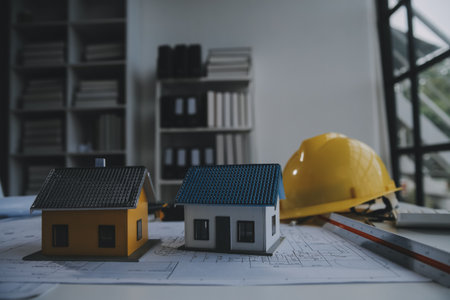Understanding the Benefits and Responsibilities of Homeownership
Making the leap from renting to owning a home is a major milestone for many Americans. While both renting and owning come with their own set of perks, homeownership offers unique financial, emotional, and lifestyle advantages that go far beyond simply having a place to live. In the U.S., owning a home is often considered a key component of building long-term wealth and stability. Unlike renting, where monthly payments go to your landlord, mortgage payments help you build equity—a valuable asset over time. Homeowners may also benefit from potential tax deductions, such as those on mortgage interest and property taxes, making ownership financially appealing for many families.
Beyond the numbers, homeownership offers an unmatched sense of pride and accomplishment. It’s about putting down roots in your community, personalizing your space without restrictions, and creating a lasting legacy for future generations. However, these benefits come with added responsibilities: maintaining your property, managing unexpected repairs, and staying current on all financial obligations like property taxes and homeowners insurance. Understanding both sides—what you stand to gain and what youll be responsible for—is essential before making the transition from renter to owner. This foundation will help you make informed decisions as you move forward in your journey toward homeownership in America.
2. Financial Prep: Budgeting, Saving, and Understanding Mortgages
Making the move from renting to owning is a huge financial step, so it’s crucial to get your money matters in order first. Here’s how you can assess your finances like a savvy American homebuyer:
Assess Your Finances and Set a Realistic Budget
Before anything else, take an honest look at your monthly income, debts, and expenses. This will help you determine what you can truly afford without stretching yourself too thin. In the U.S., lenders often use the 28/36 rule as a guideline: no more than 28% of your gross monthly income should go toward housing costs, and no more than 36% toward all debt payments combined.
| Gross Monthly Income | Max Housing Cost (28%) | Max Total Debt (36%) |
|---|---|---|
| $5,000 | $1,400 | $1,800 |
| $6,500 | $1,820 | $2,340 |
Saving for a Down Payment and Closing Costs
Most first-time buyers in the U.S. aim for a down payment of 5% to 20% of the home price. While there are low down payment options (as little as 3% for some loans), putting more down can lower your monthly payment and help you avoid private mortgage insurance (PMI). Don’t forget to budget for closing costs—which typically run between 2% and 5% of the purchase price.
Savings Strategies That Work Locally
- Open a dedicated savings account just for your future home.
- Automate deposits each payday to build your fund steadily.
- Cut back on non-essentials—think streaming subscriptions or eating out—to boost savings faster.
Your Credit Score Matters—A Lot
Your credit score is one of the key factors lenders use to determine not only if you qualify for a mortgage but also what interest rate you’ll pay. Most conventional loans require a minimum score of 620, but better rates kick in with scores above 740. It’s worth checking your credit report early on—you can get free reports annually from all three major bureaus at AnnualCreditReport.com—and fixing any errors before applying.
The Mortgage Process: Get Pre-Approved Like a Local
Pre-approval gives you an edge in competitive markets—it shows sellers you’re serious and financially ready. To get pre-approved, you’ll need documentation like pay stubs, W-2s or tax returns, bank statements, and ID. Shop around for rates from different lenders; even a small difference can save thousands over the life of your loan.
| Lender Type | Pros | Cons |
|---|---|---|
| Banks & Credit Unions | Personal service; existing customer perks | May have stricter requirements |
| Mortgage Brokers | Access to multiple lenders; flexible options | Broker fees may apply |
A Quick Checklist for Financial Prep:
- Calculate what you can afford using the 28/36 rule.
- Create a realistic saving plan for your down payment and closing costs.
- Check and improve your credit score if needed.
- Gather necessary documents for pre-approval.
Tackling these steps with confidence will make the transition from renting to owning smoother—and help you secure the keys to your new home on solid financial ground.

3. Choosing the Right Location and Home for You
Finding your first home in America is about more than just the house itself—it’s about where you’ll build your future. The right location can impact everything from your daily commute to your children’s education and your sense of belonging. Here’s how to research neighborhoods, evaluate schools, and prioritize what matters most for your American dream.
Researching Neighborhoods
Start by making a list of what matters to you: safety, walkability, access to public transit, proximity to work, or being near friends and family. Use resources like local police department websites for crime statistics, Google Maps to explore the area virtually, and neighborhood review sites such as Niche or Nextdoor for resident feedback. Don’t hesitate to drive or walk around potential neighborhoods at different times of day—you’ll get a real feel for the community vibe.
Evaluating Schools
If you have kids—or plan to—school quality might top your list. In the U.S., school ratings can significantly affect home values. Check GreatSchools.org for independent ratings, but also visit schools in person if possible. Talk with parents at local playgrounds or coffee shops to get honest opinions on teachers, extracurriculars, and school culture. Remember that even if you don’t have children, homes in good school districts often retain value better over time.
Assessing Community Life
Community amenities like parks, libraries, farmers markets, and recreation centers can make a big difference in everyday happiness. Look up city or county websites for event calendars and facility information. Attend an open house or community event before buying—many buyers find their dream neighborhood by chatting with potential neighbors or seeing how active the local social scene is.
Prioritizing Your Must-Haves
With so many factors to consider, it’s easy to get overwhelmed. Make a list of “non-negotiables” (like number of bedrooms or distance from work) versus “nice-to-haves” (like a big backyard or updated kitchen). This will help you stay focused when touring homes and making offers. Remember, compromise is part of the process—but knowing what matters most will keep you grounded as you transition from renting to owning in America.
4. Navigating the Homebuying Process
Transitioning from renting to owning is a big step, and understanding each phase of the homebuying process can make your journey smoother. Here’s a practical breakdown of what you can expect, so you’ll know how to move forward confidently.
Step-by-Step Overview
| Stage | Main Actions | Key Players |
|---|---|---|
| Making an Offer | Work with your real estate agent to draft a competitive offer based on market research. Consider contingencies like financing and inspections. | Buyer, Real Estate Agent |
| Offer Acceptance & Contract | If your offer is accepted, you’ll sign a purchase agreement. This is when earnest money is typically deposited. | Buyer, Seller, Agents |
| Home Inspection | Schedule a professional inspection to check for issues with the property’s condition. Negotiate repairs if necessary. | Buyer, Inspector, Agent |
| Appraisal | Your lender will order an appraisal to ensure the home’s value matches the loan amount. This step protects both you and the bank. | Lender, Appraiser, Buyer |
| Finalizing Financing | Submit all necessary documents to your lender for mortgage approval. Review your Loan Estimate and Closing Disclosure closely. | Lender, Buyer |
| Closing Day | Attend the closing meeting to sign all final paperwork, pay closing costs, and receive your keys! | Buyer, Seller, Agents, Title Company |
The Role of Your Real Estate Agent
Your real estate agent is your advocate throughout this process. They help you craft offers that fit local expectations, recommend trusted inspectors or appraisers, and negotiate on your behalf after inspections reveal issues. Choose someone who understands your needs and communicates clearly—this partnership makes all the difference in stressful moments.
Inspections and Appraisals: What to Expect
A home inspection provides a clear look at potential repairs or safety concerns. It’s common in American culture for buyers to request fixes or credits after an inspection report. Meanwhile, an appraisal ensures you’re not overpaying; if the appraisal comes in low, you may need to renegotiate or bring extra funds to closing. Both steps protect your investment.
Pro Tip: Stay Organized!
Create a checklist or spreadsheet to track deadlines for contingencies, document requests from your lender, and appointments with inspectors. Staying on top of these tasks helps prevent last-minute surprises as you move toward closing day.
5. Planning for Hidden Costs and Ongoing Expenses
One of the biggest surprises for first-time homebuyers is realizing that the purchase price is just the beginning. Unlike renting, owning a home in the U.S. comes with a variety of hidden costs and ongoing expenses that need to be planned for carefully. Let’s break down what you should expect so you can budget realistically and avoid financial stress down the road.
Property Taxes
Property taxes are a significant annual expense that varies by location but can add thousands of dollars to your yearly costs. Unlike rent, where these taxes are baked into your monthly payment, as an owner you’ll pay them directly—often through your mortgage escrow account. Be sure to research the tax rates in your desired neighborhood and factor this into your monthly budget.
Homeowners Association (HOA) Fees
If you’re buying into a community with shared amenities or common areas, such as condos or certain suburban developments, you’ll likely owe HOA fees. These can range from modest to substantial, depending on services provided (like landscaping, pools, or security). Always ask about HOA dues before making an offer, as these fees are non-negotiable and can significantly impact affordability.
Homeowners Insurance
Lenders require homeowners insurance to protect their investment—and yours—against damage or loss. Coverage costs depend on factors like your home’s value, location, and coverage options. It’s wise to shop around for quotes and understand what’s included, as policies typically do not cover flood or earthquake damage unless added separately.
Routine Maintenance and Repairs
Unlike renting, where landlords handle most maintenance issues, homeowners shoulder full responsibility for upkeep—from lawn care to appliance repairs and roof replacements. Experts recommend setting aside at least 1% of your home’s value annually for maintenance. For example, if your home is worth $300,000, aim to save $3,000 per year for repairs and unexpected issues like plumbing leaks or HVAC breakdowns.
Real-World Example
Consider Sarah, a new homeowner in Texas: Beyond her mortgage payment of $1,800/month, she pays $350/month in property taxes, $120/month in HOA dues, $90/month for insurance, and averages $150/month for routine maintenance over the year. That’s nearly $700 in additional monthly expenses—costs she hadn’t considered when budgeting as a renter.
Budgeting Tip
Create a spreadsheet or use a budgeting app to track all these ongoing expenses. Being proactive ensures you’re never caught off guard by the true cost of homeownership—and sets you up for long-term success in your new home.
6. Moving In and Making Your House a Home
Plan for a Smooth Move
The excitement of owning your first home can easily be overshadowed by the stress of moving. To keep things on track, start planning early. Book your moving company or rental truck well in advance—especially during busy seasons like summer or around the end of the month. Create a checklist that breaks down tasks week by week, such as packing room by room, notifying your landlord, and updating your address with the post office, banks, and subscription services.
Set Up Essential Utilities Before Arrival
No one wants to spend their first night in a new house without electricity or running water. Contact local utility providers at least two weeks before your move to set up electricity, gas, water, trash service, and internet. Many areas let you schedule start dates online or over the phone. Don’t forget to ask about any required deposits or installation fees so you can budget accordingly.
Unpack Efficiently and Prioritize Comfort
Once you arrive, focus on unpacking essentials first—think bedding, toiletries, kitchen supplies, and pet needs if you have animals. Labeling boxes by room ahead of time makes this process much easier. As you settle in, take it slow and tackle one space at a time. This helps prevent overwhelm and allows you to thoughtfully arrange your new home to fit your lifestyle.
Connect with Your Community
Building relationships with neighbors is a great way to feel more at home. Introduce yourself soon after moving in—even a simple wave or small chat can go a long way. Explore local businesses like coffee shops, parks, and farmers markets to get a feel for the area. If you’re interested in meeting more people, look for community groups or neighborhood associations on Facebook or Nextdoor.
Add Personal Touches
Your house should reflect your personality and bring you joy. Start small: hang family photos, add favorite throws to the couch, or display artwork that inspires you. Over time, consider paint colors, furniture updates, or landscaping projects that align with your vision—and your budget.
Enjoy the Journey
Remember, turning a house into a home is an ongoing process. Allow yourself patience and flexibility as you adjust to ownership. Celebrate milestones big and small—from finally unpacking the last box to hosting your first BBQ. With each step, you’re not just building equity—you’re creating lasting memories in a space that’s truly yours.


